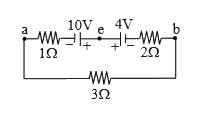Mass has both magnitude and direction.
The correct Answer is:F
Step-by-Step Solution:
1. Understanding the Statement: The statement claims that "mass has both magnitude and direction." We need to analyze this statement to determine its validity.
2. Definition of Mass: Mass is defined as a measure of the amount of matter in an object. It is a scalar quantity, which means it only has magnitude and no direction.
3. Scalar vs. Vector Quantities:
- Scalar Quantity: A quantity that has only magnitude (size) and no direction. Examples include mass, temperature, and time.
- Vector Quantity: A quantity that has both magnitude and direction. Examples include velocity, force, and displacement.
4. Conclusion: Since mass is a scalar quantity and does not have a direction, the statement "mass has both magnitude and direction" is false.
5. Final Answer: The statement is false.
- Scalar Quantity: A quantity that has only magnitude (size) and no direction. Examples include mass, temperature, and time.
- Vector Quantity: A quantity that has both magnitude and direction. Examples include velocity, force, and displacement.
Topper's Solved these Questions
- MOTIONBOOK - ICSECHAPTER - MOTIONEXERCISE - TEST YOURSELF (FILL IN THE BLANKS)
7 Videos
- MOTIONBOOK - ICSECHAPTER - MOTIONEXERCISE - TEST YOURSELF (MATCH THE COLUMN)
1 Video
- MOTIONBOOK - ICSECHAPTER - MOTIONEXERCISE - TEST YOURSELF (NUMERICAL)
13 Videos
- MODEL TEST PAPER 2BOOK - ICSECHAPTER - MODEL TEST PAPER 2EXERCISE - SECTION II
40 Videos
- PHYSICAL QUANTITIES AND MEASUREMENTBOOK - ICSECHAPTER - PHYSICAL QUANTITIES AND MEASUREMENTEXERCISE - EXERCISE PICTURE STUDY
3 Videos
Similar Questions
A vector has both magnitude and direction. Does that mean anything that has magnitude and direction is necessarily a vector ? The rotation of a body can specified by the direction of the axis of rotation and the angle of rotation about the axis. Does the make any rotation a vector ?
View SolutionAssertion: A vector qunatity is a quantity that has both magnitude and a direction and obeys the triangle law of addition or equivalentyly the parallelogram law of addition.
Reason: The magnitude of the resultant vector of two given vectors can never be less than the magnitude of any of the given vector.
View SolutionElectric current has both magnitude and direction it is a .
View SolutionAssertion: In projectile motion, the acceleration is constant in both magnitude and direction but the velocity changes in both magnitude and direction.
Reason: When a force or accelration is acting in an oblique direction to the direction of velocity then both magnitude and direction of the velocity may be changed.
View SolutionAssertion: The relative velocity of the two particles in head-on elastic collision is unchanged both in magnitude and direction.
Reason: The relative velocity is unchanged in magnitude but gets reversed in direction.
View SolutionAssertion: The relative velocity of the two particles in head-on elastic collision is unchanged both in magnitude and direction.
Reason: The relative velocity is unchanged in magnitude but gets reversed in direction.
View SolutionThe resultant of two vectors , having equal magnitudes E make an angle of 120∘ with each other . What is the magnitude and direction of the resultant ?
View Solution→A is a vector of magnitude 2.7 units due east . What is the magnitude and direction of vector 4 →A ?
View SolutionIn the circuit diagram show below, the magnitude and direction of the flow of current respectively would be -

View SolutionA quantity has magnitude and direction .can you call it a vector ?
View Solution
